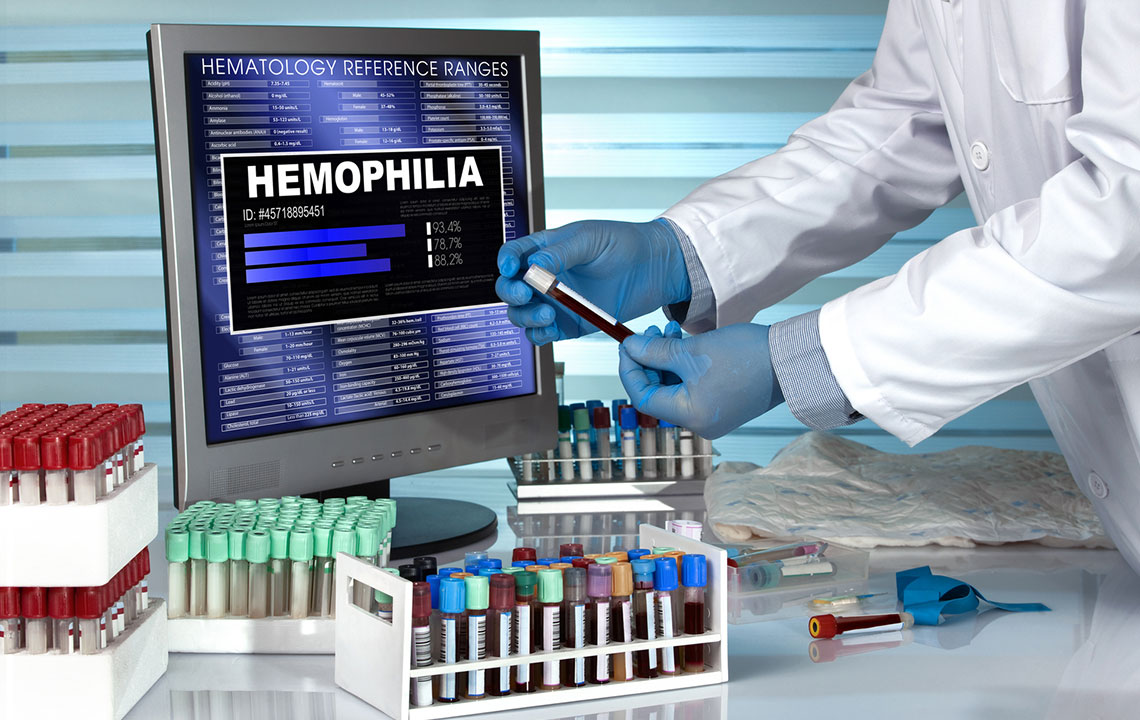The Diagnosis and Prognosis of Hemophilia
Hemophilia is a condition where the person has low levels or lacks the required amount of certain proteins that clot the blood. This results in the blood not clotting the way it normally does and consequently, excessive bleeding. People who have been diagnosed with hemophilia generally tend to bleed easily and the blood comparatively takes a longer time to clot. They can experience internal bleeding or spontaneous bleeding as well. It is an inherited bleeding disorder and is rare but serious in nature.
According to Centers for Disease Control and Prevention (CDC), there are two types of hemophilia, they are hemophilia A and B.

Diagnosis of hemophilia
If a person who has been diagnosed with hemophilia has bleeding problems, the first thing doctors do is inquire about the medical history of the patient.
- Complete blood count (CBC)
This test measures the size and number of red blood cells (RBCs), the amount of hemoglobin (the red pigment that carries oxygen within the red blood cells), and the number of white blood cells and platelets as well. There is a decrease in the hemoglobin level and RBC count if the person diagnosed with hemophilia has been suffering from prolonged, heavy bleeding. - Prothrombin time (PT) test
This test is conducted in order to measure the time taken to form blood clots. It measures the clotting ability of factors VIII, IX, XI, and XII. If any of these factors are low in number, the time taken for the blood to clot is longer than usual. - Activated partial thromboplastin time (APTT) test
This test is also used to measure the clotting ability of factors VIII, IX, XI, and XII and the delay in the formation of blood clots. If the clotting ability of the factors is low, the time taken for the blood to clot is longer. Requiring a longer time for clotting to take place has been observed in patients who have been diagnosed with hemophilia A or hemophilia B. - Fibrinogen test
Fibrinogen is also known as clotting factor I. The fibrinogen test assesses the ability of a patient to form a blood clot as well. When a patient has an abnormal PT or APTT test results, this test might be performed along with other blood clotting tests.
Prognosis of hemophilia
Depending upon the lack of the blood-clotting factors in the body, hemophilia can be classified as mild, moderate, and even severe. Majority of the people who have been diagnosed with hemophilia have the same in a severe form. The life-threatening complications that are associated with this disease are hemorrhages in the soft tissue of internal organs or around the airways and bleeding in the skull. About 10% of the people who have been diagnosed with severe hemophilia suffer from bleeding in the skull. Young people who have been diagnosed with hemophilia also face difficulties in performing well academically, having a below-normal motor skill, and behavioral and emotional issues. They can live a fulfilling and productive life with the help of counseling, education, and being given the required treatment. Clotting-promoting medications that help in preventing serious bleeding and comprehensive care have helped in providing better lives to people who have been diagnosed with hemophilia. The combination of these two treatments has helped a lot in ensuring that the disease does not get worse, improves the quality of life, and even the life expectancy of the person diagnosed with hemophilia.
Depending on the treatment the person diagnosed with hemophilia receives, the life expectancy in hemophilia tends to vary. Due to inadequate treatment, many patients die before adulthood. Compared to the healthy individuals, if given proper treatment one’s life expectancy is only 10 years less than normal. Also, the mortality rate of people diagnosed with hemophilia also depends upon the other diseases that the person is battling. Immediate and effective treatments have reduced the life-threatening risk of bleeding episodes and severity of damage to the joints in the long-run.

